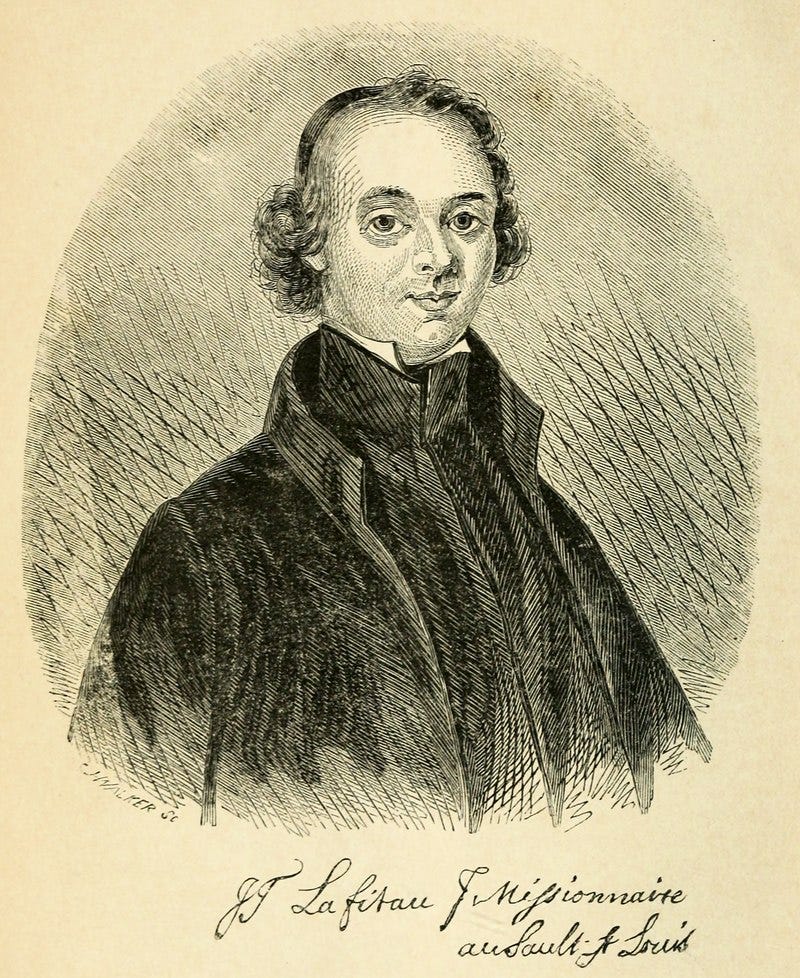First, a disclaimer, which is that history can sometimes (often?) be… uncomfortable. You’ve been warned.
Divide, What Divide?
The sign isn’t an official historic marker, but it’s so large that I couldn’t help pulling over to take a picture during a recent trip to the Adirondacks. I was on my way home from visiting the fire tower at the summit of Blue Mountain and the enormous wooden sign called me to pull over.
This was a watershed within a watershed, let’s call it a mini-watershed between the great St. Lawrence and Hudson rivers. The primary watershed in these parts is, of course, the St. Lawrence River Divide which separates the Great Lakes from the Atlantic Ocean.
But this lone sign, near a lovely lookout over Lake Durant near the town of Blue Mountain Lake in front of a residential home provided a feeling of movement. I was at the top now, my journey east was now all downhill. At least to the Hudson.
This sign made me feel like I was making progress - I had come from one place and was now on my way to another, according to a slope in the land that I could not see or feel. But the sign encouraged me to keep moving east, east young man, the grand Hudson awaited.
Eaters of Tree Bark
Etymologically speaking there’s very little in the way of positive history when it comes to the Adirondacks.
First, the name is thought to derive from a Mohawk word meaning “eater of tree bark,” a derisive term bestowed by them upon a neighboring Algonquin tribe. The earliest written use of the name was Adirondakx way back in 1635 in a book called Journey Into Mohawk Country by Harmen Meyndertsz van den Bogaert.
Harmen, an early Dutch settler, worked as something they called a Barber Surgeon back then, basically a battlefield or outdoor doctor. The Dutch West India Company sent him into the wilderness to help bolster the fur trade, and he kept a journal which became the book. Harmen’s journal is the earliest known treatment of the Mohawk language in existence and thus of great historical value.
Sadly, Harmon’s accomplishments are overshadowed by the fact that he appears to have been caught in a relationship with his slave, Tobias. They were jailed at Fort Orange, modern day Albany. Knowing the penalty for homosexual relations throughout the Dutch Empire was death, Harmon attempted to escape by crossing over the partially frozen Hudson. He fell through the ice and drown. The fate of Tobias is unknown.
A variation of the word, Rondaks, popped up again in 1729, used by French missionary Joseph-François Lafitau. Joseph-François became famous in Europe not for his Adirondack explorations, but for being the white man who brought ginseng back to Europe from where it was growing along the St. Lawrence River. Soon factories were exporting this miracle cure to China and France.
One final note on geography: The Adirondacks are neither part of the long Appalachian Mountains range nor the Catskills. In fact, the area is the eastern most region of something called the Canadian Shield, an enormous nearly circular region of the Earth with huge areas of exposed Precambrian rock. Honestly, I don’t know what any of that means - something about tectonic stability and high grade metamorphic rocks - but I do like the name.
A Chair So Comfortable, It’ll Cure You of Your Ills
One last thing so we can go out on a high note. A visitor literally can’t drive for two minutes in New York without stumbling across some variation of an Adirondack chair, that ubiquitous high backed, wide armrests chair named after the mountain range where they were invented.
But were they really invented in the Adirondacks? I’m just kidding, you thought I was going to tell you they were invented in Canada or something didn’t you?
No worries. The first Adirondack chairs were indeed invented and built near Saranac Lake by Boston native Thomas Lee, called Westport chairs at first. Then in 1904, Thomas handed the chair’s plans over to his hunting pal Harry Bunnell who got a patent for the design and touched up the design. The popularity of the chair exploded.
But it exploded for one reason. Consumption.
At the time the boys were building their chair, victims of tuberculosis from all over the world were flocking to the Adirondacks to take part in what was known then as the “wilderness cure.” Fresh air, clean living and no pollution resulted in the establishment of consumption sanatoriums all through the Adirondacks.
And those sanatoriums were seeking something called, wait for it, convalescent furniture.
Enter the Adirondack chair. Wide armrests that opened the chest. Angled seating that could accommodate a bedpan. A drop down footrest. Stiff back support.
In his book, “The Adirondack Chair,” Daniel Mack writes that were it not for tuberculosis, “It’s unlikely that there would have been an Adirondack chair.”
Now-a-days, you don’t need to be suffering from consumption to enjoy an Adirondack chair. Simply drive down to your nearest Wal-Mart, pic out your favorite color, plop it down on your porch and a restful nap awaits.
Housekeeping - Hi gang, don’t forget that our referral contest continues. You can win yourself some signed notes and cover autographs and other cool things. Just check out the post here: Referral Contest Goes On!
Volume 2 of our Rocks That Rock series is coming soon, we promise! And work continues of my field guide to Fire Tower Hikes of New York State. Check out this link for info on all our books: Dan’s Bookstore
What else? What’s up with you? How is your fall going, what do you have planned? As always, thanks for sticking around and being part of this community.
Till next time, be kind and on we go!






I just shared the referral link; sorry I'm late to the party. I came down with COVID last Thursday and am finally catching up on things.